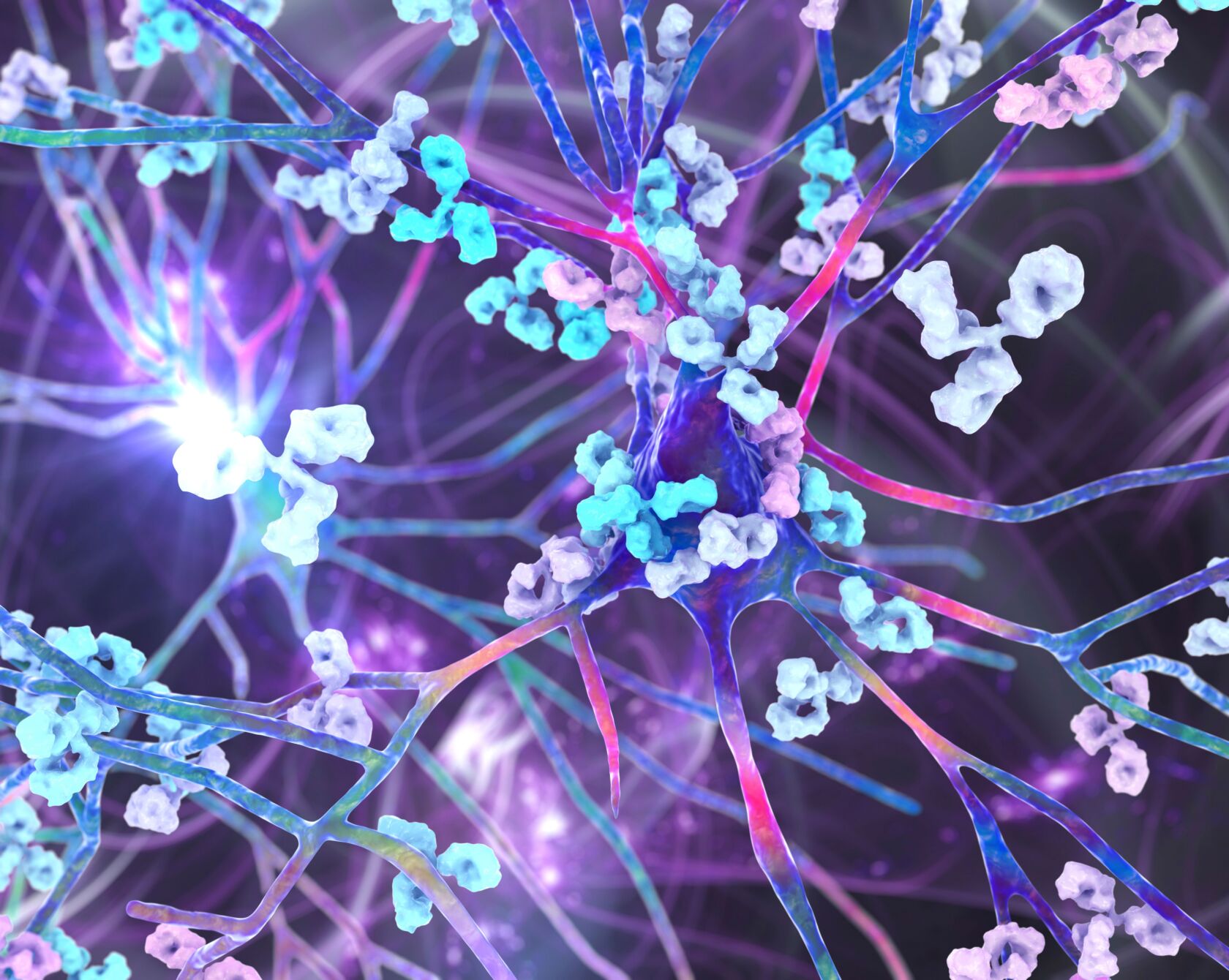If the immune system gets out of balance, it can turn its weapons against itself. Autoimmune diseases can take a severe course and usually require lifelong treatment. The causes are not yet fully understood.
Text: Helga Kessler
Friend or foe? The human immune system constantly checks whether the material it detects belongs to the body or not. If it finds pathogens such as bacteria or viruses or pathologically altered cancer cells, it deploys its arsenal of weapons. Scavenger cells, antibodies and killer cells ensure that anything identified as “foreign” is removed and the person remains healthy. But as efficient as the immune system is at fighting off pathogens or other foreign material, the consequences are serious if it makes mistakes and turns against its own body. In an autoimmune disease, the immune system attacks the body’s own structures, cells or tissue by forming autoantibodies and activating immune cells. These then attack organs, skin, bones or nerve cells and damage the healthy tissue, causing the affected areas to become inflamed. Once the immune system is set to defend itself against its own material, it can hardly be stopped. Inflammation becomes chronic and causes increasing damage. This can result in progressive and degenerative diseases which, if severe, can lead to death.
Destroyed organs
Which symptoms result and how the disease develops depends on which part of the body is affected. The immune system can specifically target a certain organ and gradually damage or destroy it through chronic inflammation. In Hashimoto’s thyroiditis, the thyroid gland eventually stops producing thyroxine; in type 1 diabetes, the insulin-producing cells of the pancreas fail; in multiple sclerosis, parts of the nerve fibers in the brain and spinal cord are damaged to such an extent that nerve conduction is irreparably impaired; in ulcerative colitis, the mucous membrane in the large intestine becomes inflamed in phases, which can cause severe pain and bleeding. Almost every organ in the body can be affected by an “organ-specific autoimmune disease”.
100 different diseases
If several organs and tissues in the body are the target of the attacks, these are referred to as “systemic autoimmune diseases”. They are particularly complex and can take very different courses in the people affected. In rheumatoid arthritis, it is mainly the joints that become inflamed, in vasculitis the blood vessels and in polymyositis the muscles. Lupus erythematosus is a typical systemic disease in which the skin and often also the kidneys become inflamed in addition to the joints.
Occurrence in the population
Around 100 different autoimmune diseases are known, affecting an estimated five to eight percent of the population worldwide, women four times more frequently than men. Depending on the disease, different ethnic groups may be more severely affected. Some diseases begin in childhood and adolescence, such as type 1 diabetes, others in young adulthood, such as multiple sclerosis or lupus erythematosus. For others, such as rheumatoid arthritis, the risk increases with age.
